 BREAKING: Royal Enfield Scram 440 Launched In India
BREAKING: Royal Enfield Scram 440 Launched In India
 Hyundai Creta Electric Reaches Dealerships, Check It Out In 9 Images!
Hyundai Creta Electric Reaches Dealerships, Check It Out In 9 Images!

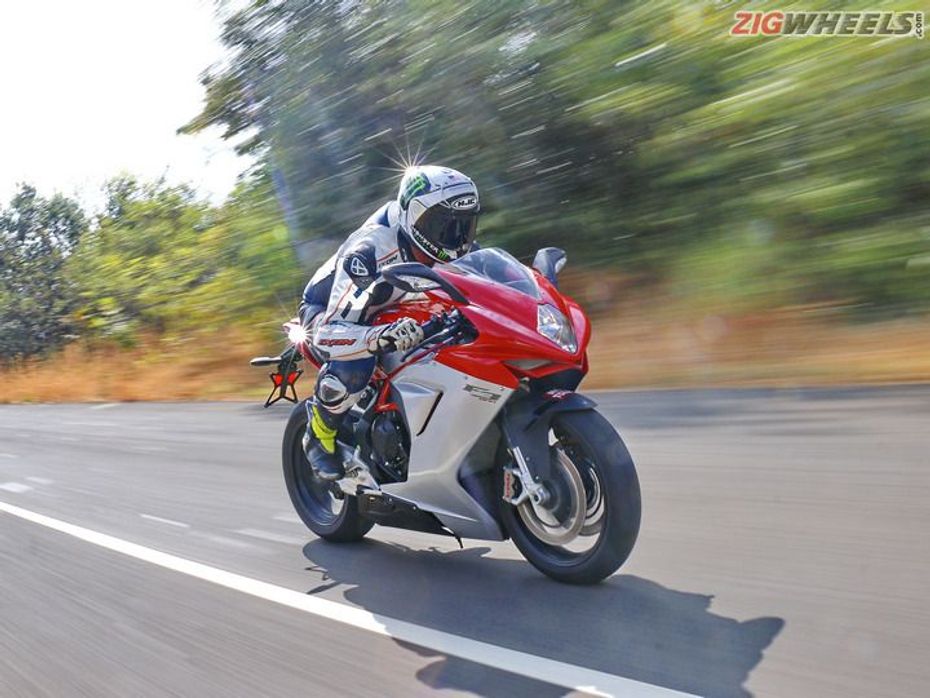
The road was a familiar one; smooth, with a generous helping of tight chicanes interspersed by short straights. The ride was MV Agusta’s F3 800. A few kilometres down the road, I pulled over to recalibrate my senses. “Crikey, what they say is true!” I said to myself. The bike was compact and light in typical middleweight supersport fashion, but performance was a lot more explosive. The new breed of middleweights offer the best of two worlds, they have the lightness and agility of a 600 but the performance is closer to the 1000s. After, this short stint it seemed the MV Agusta F3 800 was going to pepper that formula with a bit of Italian zing.
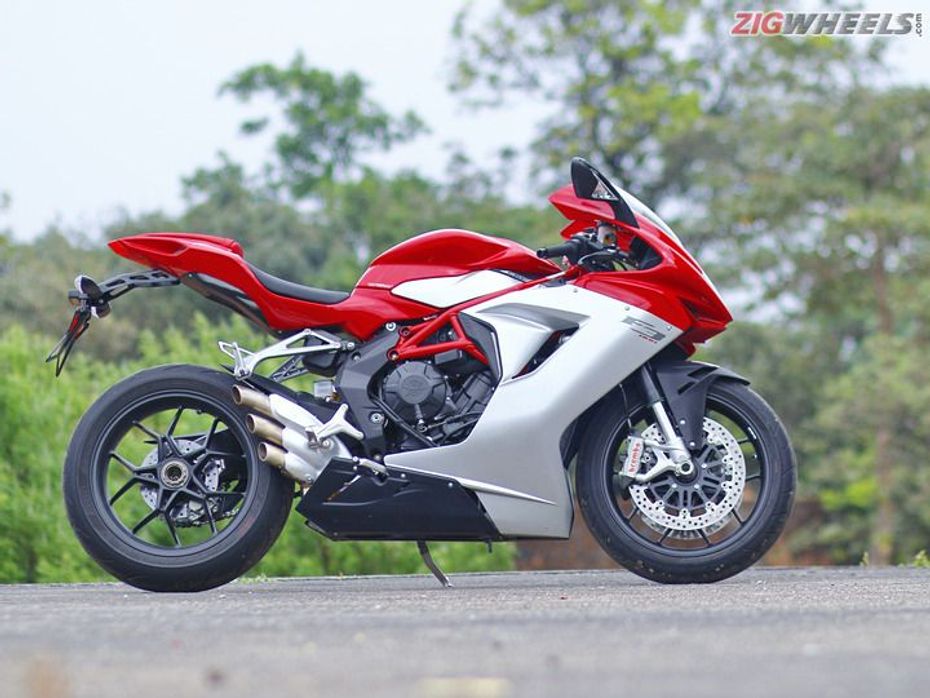
Sizing it up
Going by displacement the F3 800’s direct rival is Ducati’s 959 Panigale, though Triumph’s Daytona 675 R is a legit competitor too. I remember the Ducati feeling bigger in size, and its displacement and power output of 159PS put it a lot closer to litre-class superbikes. Admittedly, the F3 feels a lot smaller – visually, and physically. The handlebars are closer and it feels more compact but is far from being cramped. I’m just an inch under six feet, and the bike was more than accommodating.
The F3 looks stunning – Tamburini’s designs refuse to age, even years after the man is gone. It looks gorgeous, especially in this combination of red and silver. The design oozes sexiness, and given that the current F4 is an old bike now the F3 looks a lot better, as it is far more compact. The design is all sleek and curvy, and the diamond shaped headlight is a work of art, though the projector lens from the older MVs would’ve made it look nicer. Also, the LEDs at the base of the headlight working as daytime running lamps are barely visible. The side is where the bike looks the sexiest, as there’s a nice flow from the front to rear. The tightly packaged engine and chassis add to the look, along with beautiful looking triple exhausts that end below the rider’s footpeg.
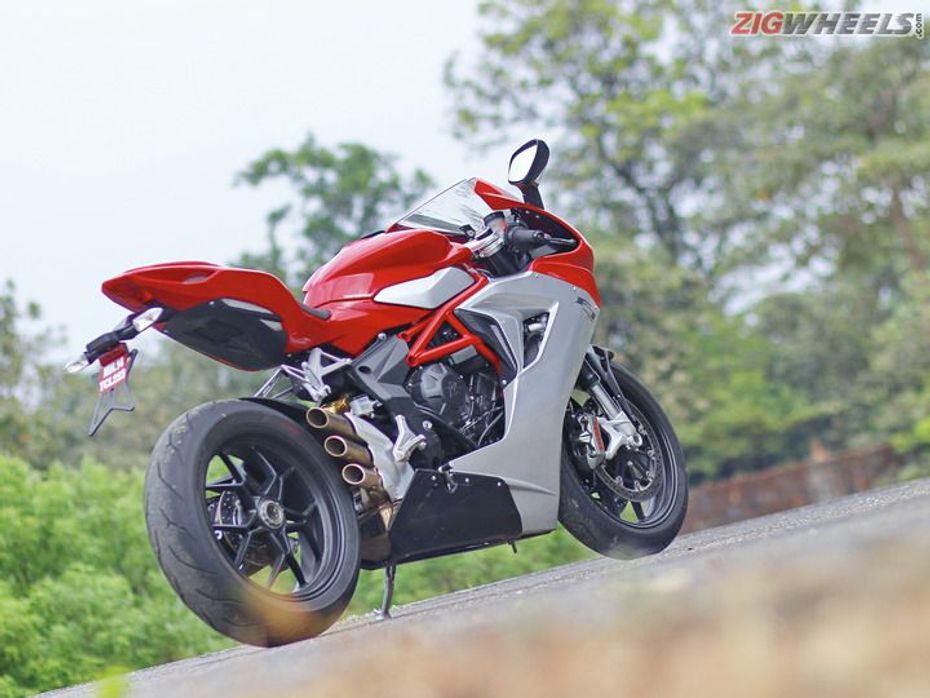
The piece de resistance is the single-sided swingarm holding the rear wheel below the slim tail piece. The red pillion seat cover adds to the sportiness of the high set tail and license plate hanger. There are a few things worth noting though. The bike here is the base version, and rear view mirrors are finished in matte-black which looks a bit out of place, as even the base F3 is expensive. Mirrors show more of your own elbows and stalks could have been longer. The front brake and clutch levers are finished in gloss black, and buffed aluminium levers would’ve looked a lot better. The information display is a black and white all-digital affair with a blue backlight, and information can be a bit too much to process on the go.
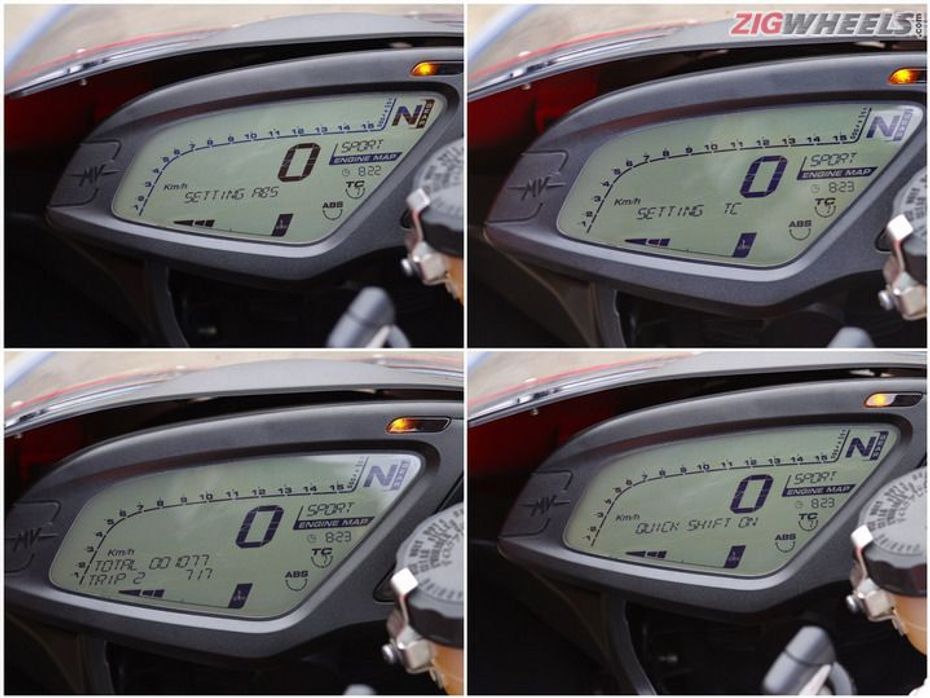
Speed Genes
The triple cylinder engine is also a nod to the brand’s racing heritage, when MV Agusta was winning championships, particularly with Sir John Surtees and Giacomo Agostini. They are lighter, offer better low down grunt while sounding as gorgeous as inline fours when revved. My first taste of the F3 was on the 675 years back, a short spin on a borrowed bike in Malaysia. I remember how impressed I was – power delivery was peaky but the agility and lightness coupled with the quick revving engine made it a lot of fun to ride fast. At 173kgs dry, the F3 800 weighs the same as the 675 but it is a lot more powerful. The new output of 148PS is produced at 13,000rpm, and the redline is set at a dizzying 13,500rpm, which means power delivery is peaky. So it’s similar in nature, but faster. The higher displacement has been met by increasing the 675’s stroke. The 675 engine was seriously oversquare, and a longer stroke hasn’t changed its character.

Thumb the motor and it sounds a bit coarse at idle with a scratchy thrum, but twist the throttle and the engine sounds the part. The F3 800 isn’t the first middleweight I was riding, but the bike surprised me the way it felt corner after corner. As I mentioned the road I was on is a familiar one, but on the F3 I constantly felt as if I was getting to the next corner quicker than I remember. Revs pile on beautifully, though the tall gearing didn’t allow me to go all the up to the redline. In fact, in first it feels as if the engine will go on revving almost till eternity. What makes it enjoyable is that there’s a rush of power from about 6000rpm onwards, and the front end wants to take off by the time you hit 10,000rpm. We couldn’t Vbox the motorcycle, but I reckon the F3 800 can clock 0-100kmph in just about three and half seconds.
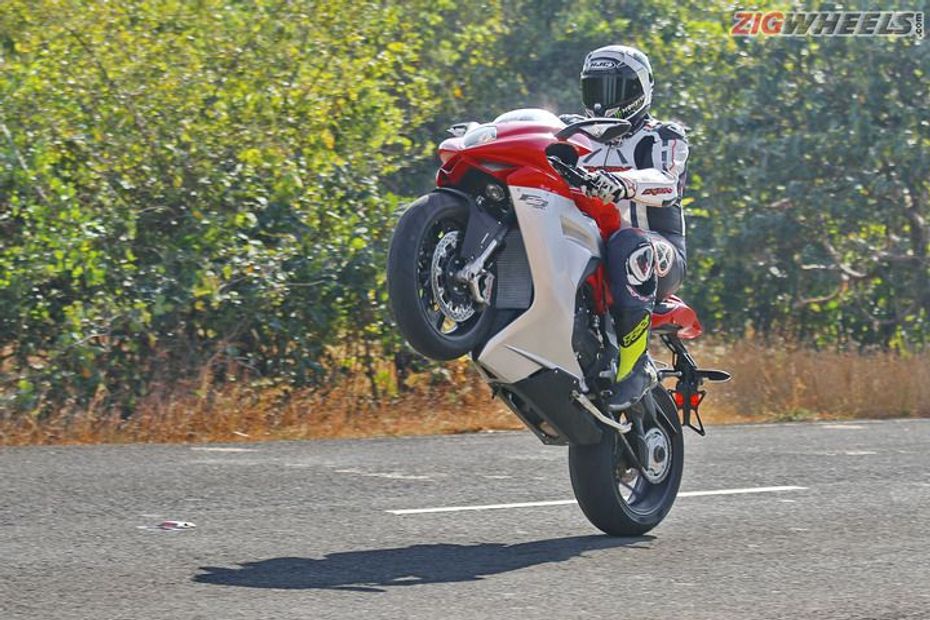
There’s also a quick shifter to help matters, and shifts are of course quicker and more convenient, though you can switch it off too. Getting used to the quick shifter takes a minute or two as a light pressure on the lever has it shift up but once you get a hang it is very helpful. Clutch action at the lever is light, the throttle also feels light and ride by wire offers crisp responses. The results of all these working together can be astounding. On the go there’s a fluidity to the way the power is laid down, though you need to work the gears thanks to the tall gearing. Keep the revs in the meat of the powerband and the F3 delights you though.
Greased Lightning
What got my attention right at the start was the F3’s lightness. The F3 uses a tubular trellis frame, which has helped make the F3 800 fluid even through a series of corners. The lightweight, aluminium single-sided swingarm is an engineering marvel, no less. Of course, 43mm Marzocchi upside down forks and a Sachs monoshock with the piggyback gas reservoir (both fully adjustable) also do their bit in helping the bike feel razor sharp. The short, 1380mm wheelbase helps turn-ins as well. When it comes to handling there’s a thin line between stability and manoeuvrability and the F3 800 treads it well. There’s a sense of agility right from the word go, with an intuitive feel – I barely had to think about where I wanted it to go, and the bike would turn in. It’s almost like a laser guided missile – point and shoot, and you know it won’t miss!
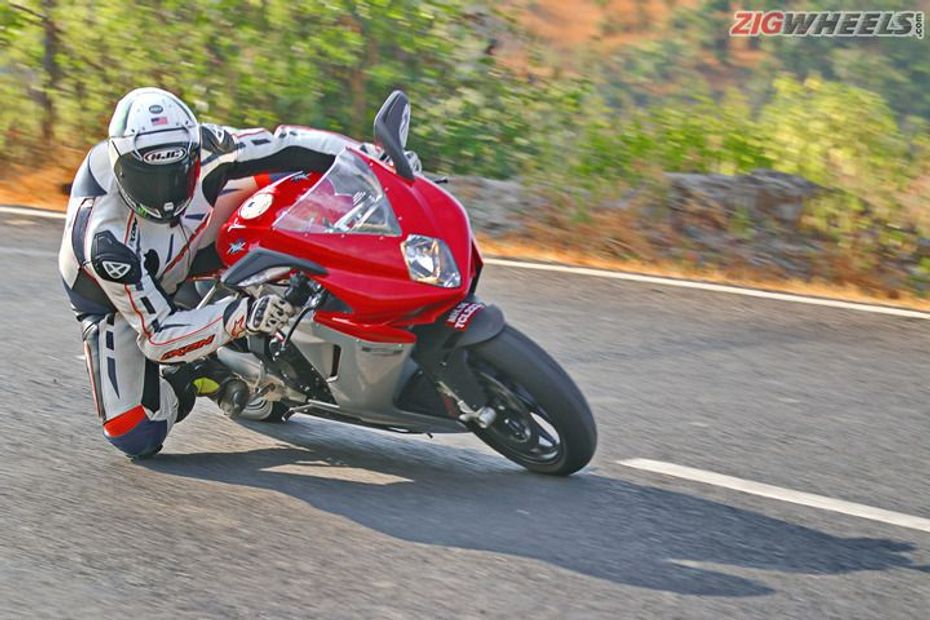
Get the right gear and the revs at corner exits and you will come out of corners grinning, as corner-exit wheelies proved to be a common phenomenon on the F3. It is a nice feeling to have the front come up softly, without getting scared. The electronics suite is pretty up to date, with 8 levels of traction control (you can switch if off too), four riding modes – Normal, Sport, Rain and Custom apart from customisable ABS – you can switch it off or choose from 3 levels, or switch to Race ABS (offers rear wheel lift mitigation). The switches for controlling modes sit on the left clip-on, but aren’t the easiest to use. I chose to keep it in Sport mode for most of the day, sticking to 1 or 2 for TC (1 being lowest of 8) and 1 for ABS (lowest). The settings offered decent traction levels and brake control without the systems getting too intrusive. Sport mode is where delivery is more aggressive, and if you’re a fairly experienced rider you won’t really bother with other modes. That said, Rain mode does really work well in softening delivery, and doesn’t let you drop TC levels manually, keeping it at 8, which is the highest.
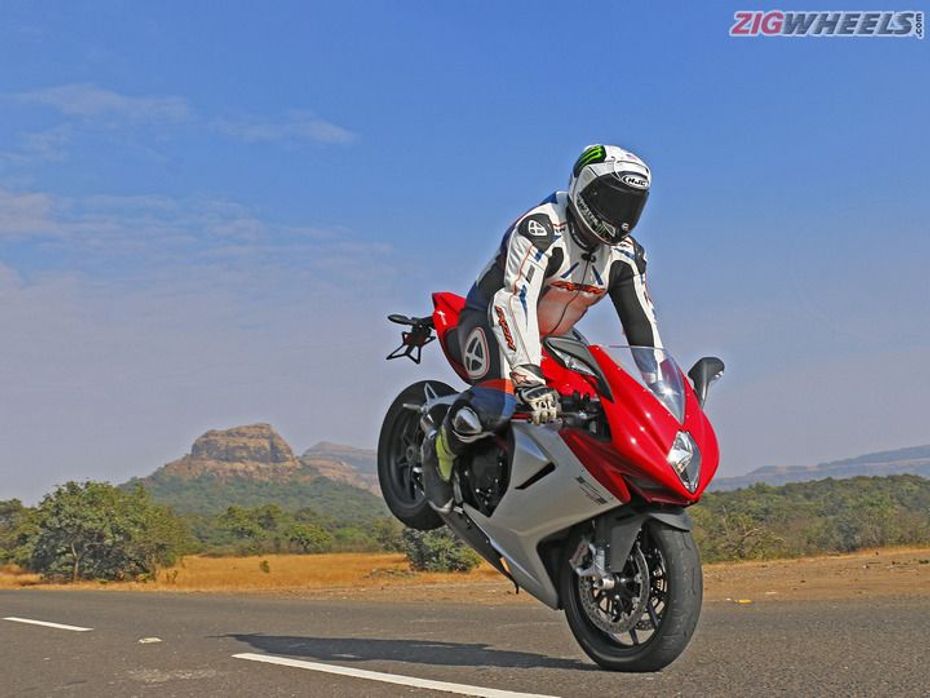
Despite the precision the suspension setup isn’t too stiff and soaks in the average bumps really well. The super sticky Diablo Rosso Corsa tyres help immensely, and a lot of credit behind my confidence in opening the throttle wide at corner exits goes to them, particularly the 180-section rear. Moving to the brakes, the F3 gets two 320mm floating Brembo radial Monobloc M4 discs upfront. There’s a progressive feel with lots of bite, and the brakes will offer lots of confidence even to novices. ABS settings let you play with how much intrusion you want, or if you want ABS at all. In case you didn’t know, the F3 675 was one of the best handling middleweights, and has been doing well for MV in the World SuperSport Championship as well. The 800 is broadly based on the same motorcycle, so no surprises in how much fun the bigger F3 is.
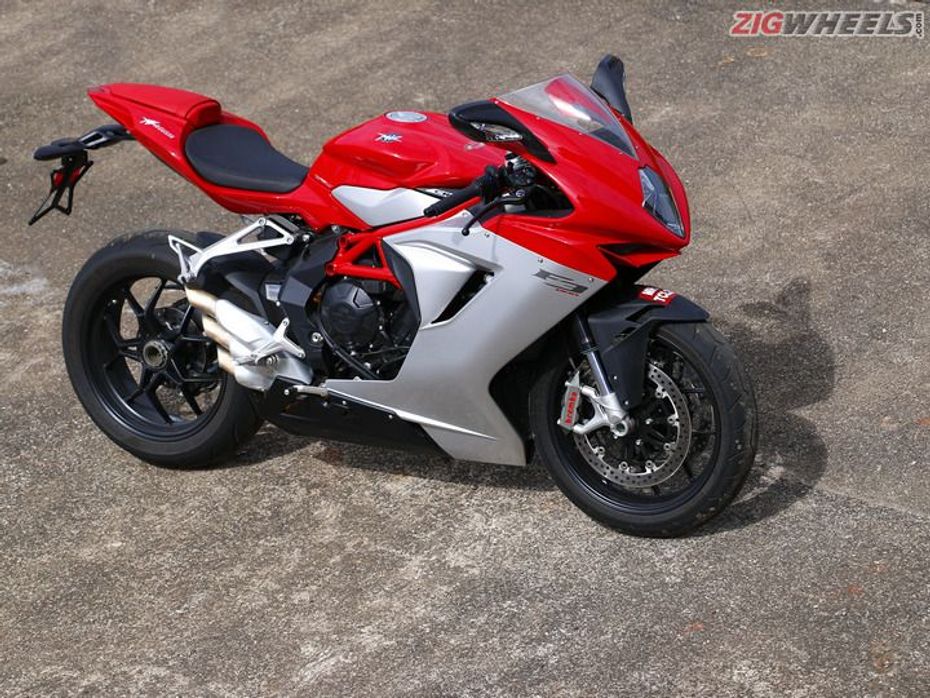
That’s besides the fact that the F3 800 is an MV Agusta, a brand revered as much for its gorgeous designs, as for its brilliant engineering and performance. MV may not be as big as its rivals, but its legacy and heritage are stuff brands dream of. And the F3 800 is a motorcycle capable of tantalising an experienced rider’s senses. I’m pretty convinced it will be a hoot on track, and should be quicker than litre-class machines on smaller tracks like the MMRT and Kari Motor Speedway. The only fly in the ointment is the pricing. At Rs 16.78 lakh ex-showroom Pune, even the base F3 is expensive. It costs significantly more than the Daytona 675 R (though the F3 is more powerful and packs in more electronics), and over two lakh more than the 959 Panigale. Also, MV Agusta is in the process of expanding its sales and service network and has limited reach. That said, there is no denying the F3 is a brilliant sportsbike. Now to figure out how we get a visit to the race track with the F3 800!
 Kawasaki Ninja ZX-10R
Kawasaki Ninja ZX-10R
 Suzuki Hayabusa
Suzuki Hayabusa
![BMW S 1000 RR[2022-2024] BMW S 1000 RR[2022-2024]](https://images.zigcdn.com/images/spacer.png) BMW S 1000 RR[2022-2024]
BMW S 1000 RR[2022-2024]
 Aprilia RS 660
Aprilia RS 660
 KTM 890 Duke
KTM 890 Duke
India's largest automotive community